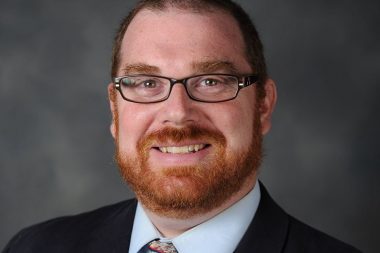The assistant professor of communications – and four-time Emmy Award recipient – assesses the former NFL player’s first few weeks behind the microphone.
Former Dallas Cowboys quarterback Tony Romo might have traded the football huddle for the broadcasting booth this fall, but he’s continued to garner plenty of attention.

The new broadcaster’s informal style has created headlines, including a USA Today article published Sept. 29 featuring Max Negin, an assistant professor in the School of Communications. The article, available on USA Today’s social media-friendly site For The Win, is titled “Is Tony Romo doing the broadcast thing right? Experts weigh in.”
The report includes critiques of Romo’s work from Negin and Syracuse University’s Olivia Stomski, as well as several related video clips. Having co-authored a book titled “Total Sportscasting” and won four Emmy Awards, including two for his contributions to NBC’s Olympics coverage, Negin was a fitting choice to offer an early assessment.
While Stomski was largely complimentary of Romo’s style, noting that it has resonated with fans, Negin explained that the new color analyst isn’t adhering to traditional broadcasting principles and needs to polish his delivery.
“My first reaction is (Romo’s) kind of doing it wrong,” Negin said in the article. “He’s talking over his play-by-play guy, he’s shouting out things during the broadcast. Someone who looks at traditional sports broadcasting would look at that and shake his head like, ‘What is he doing?’”
The Elon professor concluded that while Romo’s presentation might need work, there’s value in the information he’s providing, including his popular pre-snap predications. The main issue is how and when this information is shared, Negin reasoned.
“I get the novelty of saying, ‘What do you think is going to happen here?’” Negin said in the article. “I would just have it be a little bit more intentional about how you’re going to incorporate that prediction process as it’s happening.”


